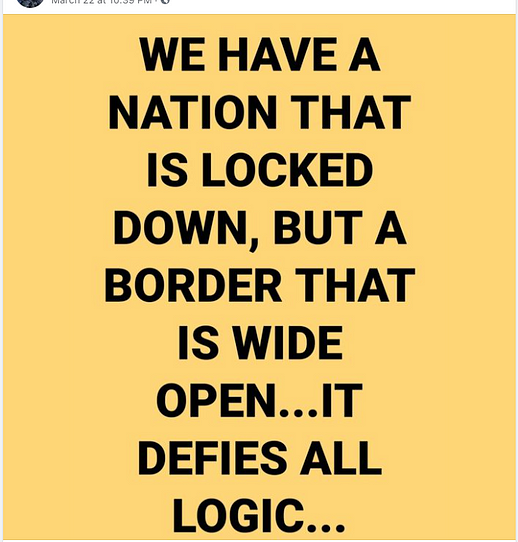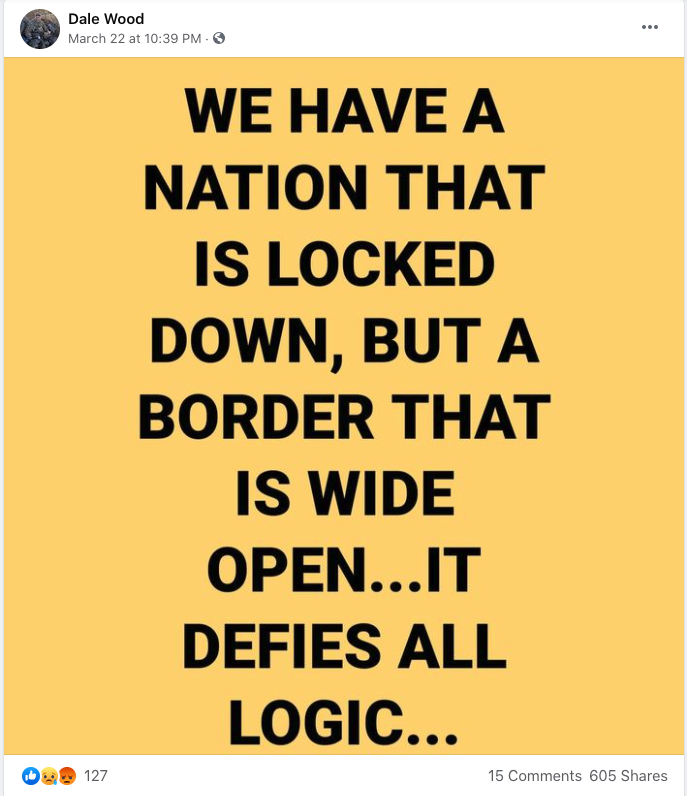Is the Border ‘Wide Open’ While the Country Is ‘Locked Down’?

A viral Facebook post claims the U.S. has a “border that is wide open,” even though the country is “locked down.” The full text of the post reads as follows:

The claims in this post are false.
Despite some reversals in Trump-era policy and the decision not to expel “young vulnerable children,” U.S. Customs and Border Patrol has reported a number of expulsions under Title 42. For context, Title 42 allows for the U.S. Customs and Border Patrol to quickly expel migrants at the Mexican border as a public health measure. Title 42 was instituted by Trump at the start of the coronavirus pandemic in March 2020.
In February 2021, authorities at the border expelled more than 70,000 people trying to cross the border under Title 42. The key difference, though, between Trump’s use of the policy and Biden’s use is that under the Biden administration, migrant children are being admitted into the country.
So, while there have been changes in Biden’s immigration policy from the Trump Administration, it’s inaccurate to claim that the U.S. border is now “wide open.”
The second part of the Facebook post’s claim that “the country is locked down,” is also untrue.
As of March 30, only four states are advising people to stay at home, but are not enforcing a curfew. These states include: California, New Mexico, Wisconsin, and Kentucky, according to the New York Times. In California, bars are the only type of establishment that is not yet open. Retail, indoor dining (for the most part), hair salons, gyms (for the most part), as well as some entertainment venues, are open in all these states, per the New York Times.
Furthermore, the majority of the country has allowed for businesses to be mostly open. Only California, New Mexico, Colorado, Arizona, Oregon, and Connecticut are states where some businesses are still closed.
If you have a claim you would like to see us fact check, please send us an email at factcheck@thedispatch.com. If you would like to suggest a correction to this piece or any other Dispatch article, please email corrections@thedispatch.com.